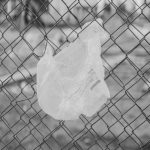This year’s Geneva watch fair featured a slew of timepieces made from new materials.
H. Moser is a niche brand that produces 2,000 watches a years for wealthy collectors. This year, H. Moser presented a watch with Vantablack, a super black coating that absorbs almost all light.
The watch is positioned against a black background and creates an illusion of a dark hole with the only visible hands.
This material is made of carbon nanotubes by NanoSystems and is the darkest in the world.
Edouard Meylan, chief of the company, stated that he wanted to present something other than what was in store windows three months later. This was his statement to AFP at Watches and Wonders.

He said, “I wanted to demonstrate the future of materials,” and added that he had intended to give a glimpse into the future outlook for the watch industry five years from now.
Vantablack has been used in clock faces by the luxury brand, but this exhibit model is entirely covered.
It cannot be touched at the moment as the material may lose its properties. It will need to be reworked before it can be worn.
Technology made by hand
According to Vincent Gregoire (head of men’s fashion for NellyRodi in Paris), black is hot this year thanks to new luxury virtuosos.
He said, “This clientele wants beauty, hyper-luxury and materials of the future, full technology but expertly handmade.”
Their taste is reminiscent of the “Anish Kapoor universe”, said he, referring to the British sculpturer who caused a scandal when he purchased the exclusive right for Vantablack to be used in the art field.
Gregoire stated that a new generation of luxury-lovers is emerging. This includes a group of “agitators”, who love street culture and salvaging and want to use their buying power for “activist actions”.
Oris will be demonstrating how it recycles plastic waste and shreds it to create a material that looks like multi-coloured marble.
Lab diamonds
LVMH owns Tag Heuer and has broken an industry taboo in the meantime by using laboratory-made diamonds in one of its flagship models.
These diamonds are not made from mine-derived chemical deposits and have not been replaced by their shiny counterparts.
They were instead chosen to investigate how the new technology that can create unique-shaped stones can give the dial a new, light-catching texture.
This new technology, the brand hopes, will enable it to explore new opportunities while still remaining firmly rooted in high-end luxury. The watch is priced at 350,000 Swiss Francs (or 345,000 Euros, or 380,000 dollars).
Tobias Kormind (head of online jewellery retailer 77Diamonds), said that lab diamonds “have a place on the market.” He was enthusiastic about the Tag Heuer watch.
He stated that lab diamonds are bought for many reasons. Some for financial reasons and some for environmental reasons.
He said that natural diamonds will remain rare and valuable over the long-term, but he stressed that they are still investable.
The stand of Cartier sparkles with natural diamonds. Richemont also owns the jeweller.
It has now created a new collection, “Coussin”, using 3D printing. The casing deforms slightly under pressure, but then returns to its original shape, just like the cushion it is named for.




